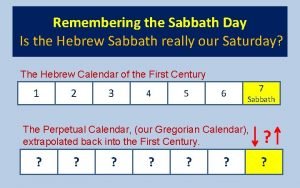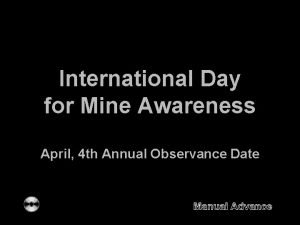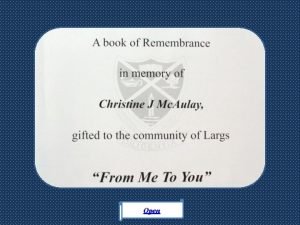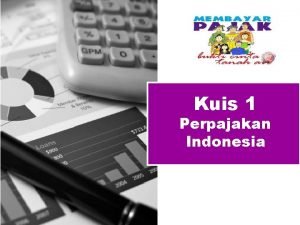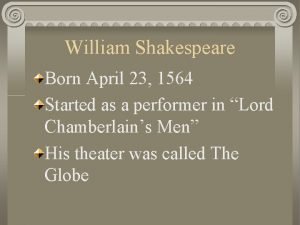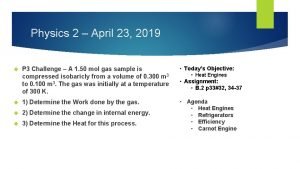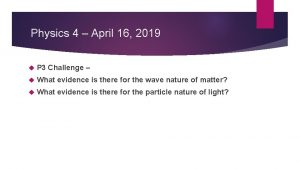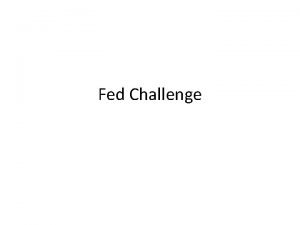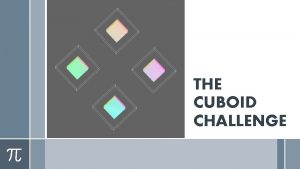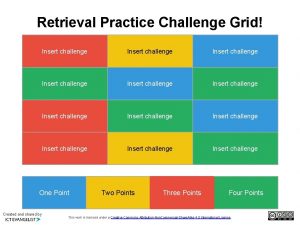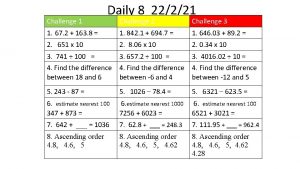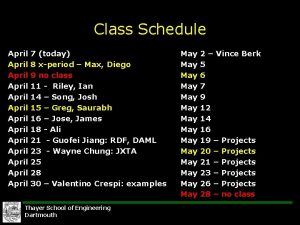Physics 4 April 23 2019 P 3 Challenge













- Slides: 13

Physics 4 – April 23, 2019 � P 3 Challenge – � Consider the reaction � e- + p + n + e � If this a valid reaction, demonstrate how each of the 4 conservation laws are validated. If not, state which conservation law or laws it violates and validate all others. � Objective: � � 7. 3 Structure of Matter Assignment: � p 307 � Get out #28 -38 for Hmk check #39 -46 Agenda: � Homework Review � Feynman Diagrams � Examples � Feynman Diagrams Activity

Topic 7: Atomic, nuclear and particle physics 7. 3 – The structure of matter FYI Some books switch the space and time axis. The IB presentation is as shown above. SPACE Feynman diagrams Richard Feynman developed a graphic representation of particle interactions that could be used to predict the probabilities of the outcomes of particle collisions. A typical Feynman diagram consists of two axes: Space and Time: TIME

Topic 7: Atomic, nuclear and particle physics 7. 3 – The structure of matter FYI The “bubble of ignorance” is the actual place in the plot that exchange particles do their thing. Ingoing and outgoing particles are labeled. SPACE Feynman diagrams Consider two electrons approaching one-another from the top and the bottom of the page… A purely spatial sketch of this interaction would look like this: The bubble of But if we also apply a time axis, the ignorance sketch would look like this: The Time axis allows us to draw eethe reaction in a spread-out way to make it clearer. e- e- e. TIME e-

Topic 7: Atomic, nuclear and particle physics 7. 3 – The structure of matter Feynman diagrams Particles are represented with straight arrows, as were the two Electromagnetic and weak electrons in the previous exchange electron-electron interaction. Exchange (force) particles are Strong exchange represented with either wavy lines (photons, W+, W- and Z 0), or curly lines (gluons). FYI You may have noticed that the electromagnetic exchange particle and the weak exchange particles all have the same wavy symbol. Indeed, it has been found that the two forces are manifestations of a single ELECTRO-WEAK force.

Topic 7: Atomic, nuclear and particle physics 7. 3 – The structure of matter e. SPACE EXAMPLE: The complete Feynman diagram showing the repulsion of two electrons looks like this: e- e. TIME SPACE EXAMPLE: Here is a diagram for one electron emitting a photon: e- e- TIME

Topic 7: Atomic, nuclear and particle physics 7. 3 – The structure of matter EXAMPLE: Here is a diagram for one positron emitting a photon: SPACE e+ SPACE EXAMPLE: In a Feynman diagram, antimatter points backward in time. This diagram represents two positrons repelling each other: e+ e+ TIME e+ e+ TIME

EXAMPLE: Here is a photon producing an electron-positron pair. SPACE Topic 7: Atomic, nuclear and particle physics 7. 3 – The structure of matter e e+ EXAMPLE: Here is an electron-positron pair annihilating to become a photon: SPACE TIME e+ e. TIME

Topic 7: Atomic, nuclear and particle physics 7. 3 – The structure of matter d SPACE EXAMPLE: Here is a diagram of a down quark emitting a Wparticle that decays into an electron and an antineutrino: u e We. TIME FYI One can use Feynman diagrams to map out complete processes – including the bubble of ignorance. Using the conservation rules and the exchange particles, you can predict what kind of processes can occur.

Topic 7: Atomic, nuclear and particle physics 7. 3 – The structure of matter SPACE EXAMPLE: Explain what has pu u n happened in this Feynman diagram. d d u d SOLUTION: e It is a diagram of a down quark W emitting a W particle that decays into an electron and an antineutrino: e Recall that a neutron consists of TIME an up-down quark combo. - + n p + e e Recall that a proton consists of an up-up-down quark combo. This is non other than the beta decay ( - ) we talked about a long time ago.

Topic 7: Atomic, nuclear and particle physics 7. 3 – The structure of matter SPACE EXAMPLE: Write the reaction (including the neutrino) for beta (+) decay. nu u p SOLUTION: d d u d Just know it! e p n + e + W EXAMPLE: Now draw the e+ Feynman diagram for the above + decay: TIME FYI Why is the neutrino not an anti-neutrino as in the - decay? To conserve lepton number.

Feynman Diagrams � Trick to reading them: Time flows from left to right. � Symbols. � Segment with arrow in direction of time to right, matter (labeled) often e- � Segment with arrow opposite direction of time, antimatter (labeled) often e+ � Wavy line, photon � Helix line, gluon, � Wavy line, W+, W-, or Z 0 labeled

Practice matching A. Matter - antimatter annihilation B. Absorption of a photon by electron C. Particle Pair production D. Emission of a photon by electron E. Absorption of a photon by antielectron Now do the Feynman Diagrams Activity

Exit slip and homework � Exit Slip – Draw the Feynman Diagram for a up quark that emits a W + exchange particle becoming a down quark. The W+ then splits into a positron and an electron neutrino. � What’s due? (homework for a homework check next class) � p 307 #39 -46 � Start Studying for U 14 Particle Physics Test on Apr 30 (next Tues) � What’s next? (What to read to prepare for the next class) � Read 7. 3
 Welcome to teen challenge uk - teen challenge uk
Welcome to teen challenge uk - teen challenge uk Valeo innovation challenge 2019
Valeo innovation challenge 2019 Linkedin
Linkedin Why does it happen
Why does it happen University physics with modern physics fifteenth edition
University physics with modern physics fifteenth edition Tiffany scroggins
Tiffany scroggins Apod nasa gov calendar 1982
Apod nasa gov calendar 1982 8 day week
8 day week April 23 1616
April 23 1616 International day april 4
International day april 4 30 tage hat september april juni und november
30 tage hat september april juni und november What is april dedicated to
What is april dedicated to Http://reformdjp/quiz/kuis-mini-april/
Http://reformdjp/quiz/kuis-mini-april/ April 23, 1564
April 23, 1564







